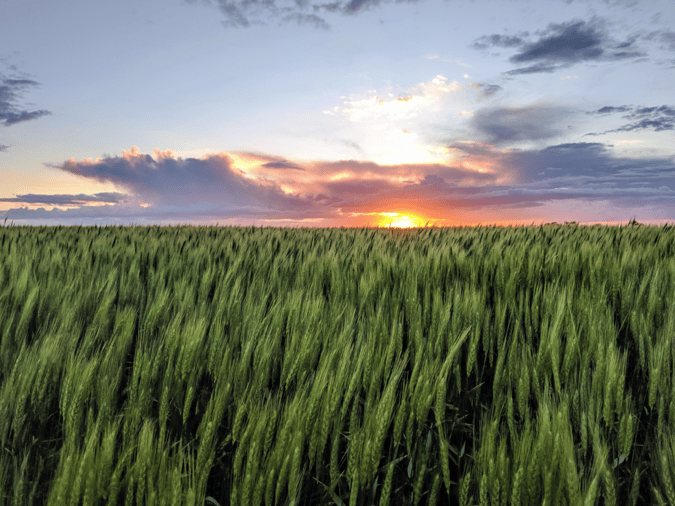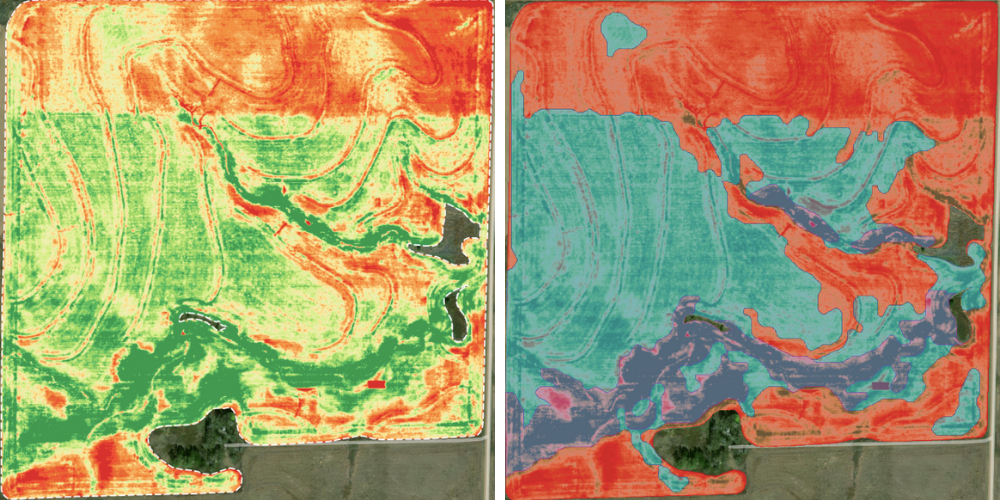Question: I’m growing winter wheat and have experienced bad weather in the lead-up to the growing season. Can imagery help me reduce my fertilizer costs?
Answer from John West, Ceres Imaging Midwest Agronomist:
Growing hard red winter wheat on the central and southern Great Plains is challenging. I often wonder if it’s like a cat with nine lives. With unpredictable weather conditions much of the year, wheat yields can vary greatly location to location.
For example, the fall of 2018 was abnormally wet. Growers struggled to get pre-plant fertilizer applied and the crop planted by Thanksgiving, but those who were able to plant in time were treated to a bountiful harvest. The fall of 2019 saw cold, wet conditions to the northern wheat-growing states, while Oklahoma, Texas, Eastern Colorado, and Western Kansas were dry. In many regions, the winter brought relatively little moisture—then late freezes in early May did considerable damage to the more mature crop.
Whatever conditions growers face in their particular corner of the country, planning nitrogen applications means asking yourself a lot of questions. Will the weather allow for fertilizer to be applied pre-plant in late summer? Will fall temperatures be warm and risk loss? Or will much of your fertilizer need to be applied in late winter or early spring once the snow melts?

With those questions settled, the next step in planning is to set a yield goal—perhaps 60 bushels per acre—and fertilize accordingly. Kansas State University researchers recommend 2.4 pounds of nitrogen per bushel yield, with adjustments for a number of factors, including soil-residual nitrogen, the previous crop, and weather conditions.
That said, a baseline yield goal is just a starting point. For many growers, yield potential may in fact be highly variable across a single field depending on available moisture, soil type, and other factors. Failing to adjust nitrogen applications to reflect that variability can generate unnecessary expense.
Instead, we recommend capturing aerial imagery during the “green-up” phase of growth to assess early vigor. Using Ceres Imaging's Chlorophyll Index, growers can quickly generate management zones, consider deploying a targeted soil sampling strategy, and set realistic yield goals—with corresponding fertilizer prescriptions—accordingly.
Here’s an example: it wouldn’t make economic sense to blanket-apply nitrogen across this field, especially in the northern 10% and areas along the southern border. With a zone map built from our scientific-grade aerial imagery, this grower can expect to optimize their dollars spent on fertilizer—and reduce their environmental impact, too.

Need help developing a plan to reduce input costs on your operation? Contact us.
